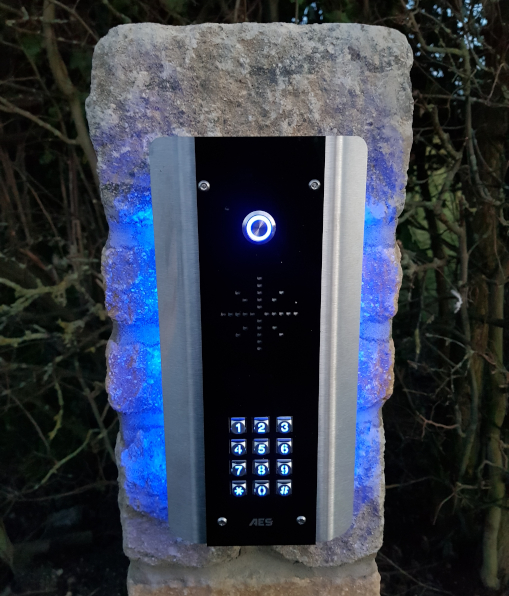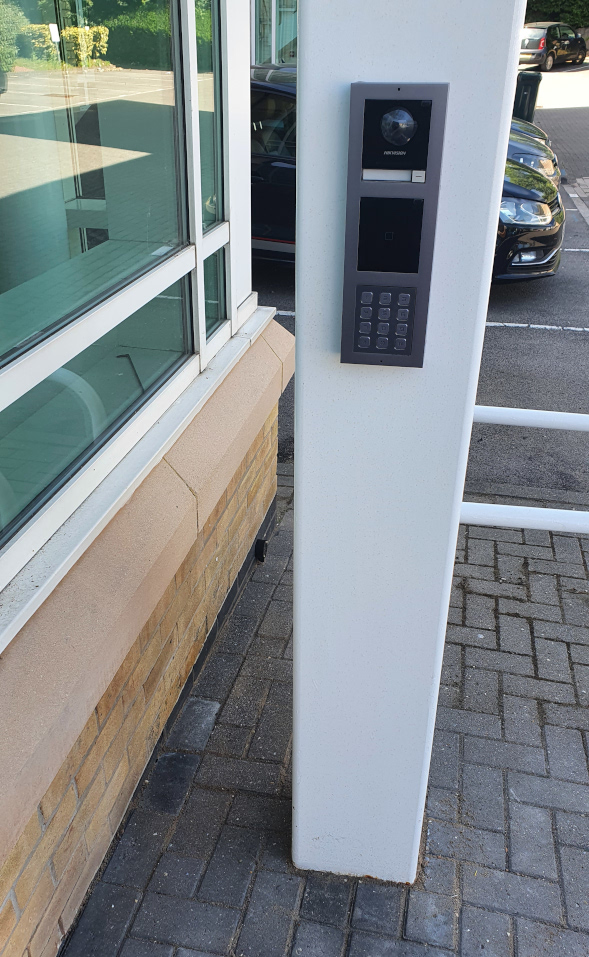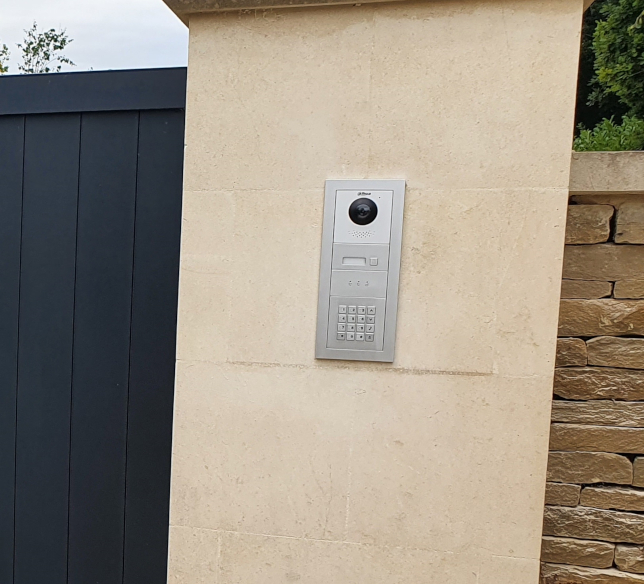We design and install access control systems for a variety of reasons.
For example, to restrict access to different areas of the building, to monitor the flow of staff around the business, or to gather location data to protect staff during emergencies.
Whether it’s a simple one door solution or a multi door solution our team are on hand to the best possible advice for your specific requirements.
Keycard and Fob Door Access Control
One way to enhance security measures is by implementing keycard and fob door access control systems.
At their core, these systems require individuals to present a designated keycard or fob, which contains embedded credentials. Upon scanning or swiping the keycard or fob, the system evaluates the presented credentials against an authorised list.
If the credentials match, access is granted, thereby ensuring that only authorised personnel can enter the secured area. This method starkly contrasts with traditional lock-and-key approaches, providing a streamlined and secure alternative.
The adaptability of these systems allows for quick responses to security threats, such as instantly disabling access for lost or compromised keycards or fobs. This capability not only enhances security but also introduces a level of convenience and efficiency unmatched by conventional methods.
Through electronic management, these systems facilitate a controlled environment, effectively managing who enters and exits, thus playing a pivotal role in modern security infrastructure.

The Benefits of Implementing Keycard & Fob Systems
The adoption of keycard and fob door access control systems offers several compelling advantages for businesses and institutions seeking to bolster their security and operational efficiency.
A significant merit is the enhancement of security levels; these systems are inherently more secure than traditional lock and key setups. In the event of loss or theft, keycards and fobs can be quickly deactivated, substantially mitigating the risk of unauthorised entry. Additionally, the ability to monitor and record entry and exit times provides invaluable insights for security audits, enabling a detailed review of access patterns and potentially identifying security breaches.
Convenience is another noteworthy benefit, as it eliminates the necessity for cumbersome keyrings, reducing the likelihood of keys being forgotten or misplaced. The compact nature of keycards and fobs facilitates effortless access to premises, streamlining entry processes. Furthermore, the potential for integration with broader security systems, such as CCTV and alarm systems, enhances the overall security posture, creating a more robust and comprehensive security infrastructure. This synergy between keycard and fob door access control systems and other security measures not only augments security but also elevates operational efficiency, making it an indispensable tool for modern security management.
We have used Digicore for our visual security for some time, and their service is excellent.
The instruction given to us on how to operate the system is second to none, with further advice always available. Highly recommended!

Video and Audio Access Control Systems
Video and audio access control systems are a modern and advanced solution that offers numerous benefits for commercial properties.
Access control mechanisms have significantly transformed from their humble beginnings of simple lock and key to sophisticated systems incorporating cutting-edge technology.
The introduction of video and audio access control systems marks a significant milestone in this evolution, blending visual and auditory verification methods to bolster security protocols.
These advancements reflect a shift towards more integrated and intelligent systems that not only control access but also offer enhanced surveillance and interaction capabilities, signifying a new era in securing premises and protecting assets.
With the addition of cameras, businesses are afforded a comprehensive overview of all movements in and out of a building or facility.
This visual oversight not only creates a record of access events but also acts as a formidable deterrent against potential trespassers.
Concurrently, the auditory component offers the unique benefit of real-time interaction, enabling immediate verification or denial of access based on verbal communication.
This not only tightens security but also introduces a personal touch to the access control process, making it more user-friendly and less intimidating for authorised entrants..
Advantages of Combining Video and Audio in Access Control
The combination of these technologies facilitates a more robust monitoring system, capable of deterring potential intruders with the visible presence of cameras and the possibility of audio intervention.
This layered approach to security ensures a more comprehensive safeguarding of premises, significantly reducing the likelihood of unauthorised access and enhancing the peace of mind for both property owners and occupants.
By leveraging video technology, access control systems are transformed into more than mere barriers; they become active participants in the ongoing vigilance required to maintain a secure environment.
Biometric Access Control Systems
These advanced systems offer a wide range of benefits, from enhanced security to increased efficiency and convenience.
Biometric access control systems utilise the power of state-of-the-art technology, including facial recognition and fingerprint scanning, to provide unparalleled security measures.
By utilising unique biological characteristics for identification, these systems ensure that only authorised individuals can access restricted areas.
The precision of biometrics means that the risk of impersonation or identity theft is significantly reduced, providing a robust barrier against potential security threats.
This method of identification is inherently more secure than traditional methods, such as keycards or PINs, which can be shared, lost, or stolen.
By harnessing the uniqueness of individual traits, biometric systems offer a reliable solution to safeguarding personnel and assets, enhancing the overall security infrastructure of any organisation.

Increased Efficiency and Convenience
The adoption of biometric access control systems significantly streamlines the process of securing premises, offering an unmatched level of efficiency and convenience. Gone are the days when employees had to carry cumbersome keycards or strain their memory for PIN codes. With a simple scan of a fingerprint or a glance at a facial recognition scanner, access is granted swiftly and effortlessly.
This immediacy in authentication not only accelerates the entry process but also dramatically lowers the likelihood of access delays caused by lost or forgotten access tokens.
It’s a method that blends security with speed, ensuring that the flow of personnel through secure checkpoints is fluid and uninterrupted. Furthermore, this expedited access means that time is reclaimed for core business activities, bolstering productivity across the board.
The convenience of biometric systems extends beyond just entry and exit procedures. The hassle of managing a physical inventory of keys or constantly updating PIN codes is eradicated, simplifying administrative duties and reducing overheads associated with lost or compromised access tokens.
In essence, biometric access control systems redefine the accessibility of secure environments, marrying robust security with a user experience that is both seamless and efficient.
Contactless Access Control
Contactless access control is a game-changer in the realm of security, providing a seamless and efficient way to control access to buildings and facilities. With its numerous benefits, contactless access control is revolutionising the way we manage access to physical spaces.
Contactless access control transcends conventional security measures through the deployment of sophisticated authentication technologies. Leveraging biometric verification such as fingerprint and facial recognition, it assures that entry is granted solely to authorised personnel. This mitigates the vulnerabilities associated with traditional security tokens like keycards or PIN codes, which are susceptible to loss, theft, or misuse.
The intrinsic characteristics of an individual, which form the basis of biometric authentication, significantly lower the probability of unauthorised access, thereby bolstering the security framework of organisations. This level of authentication precision not only enhances the security infrastructure but also instils a sense of reliability and safety among users and administrators alike.
Reducing Costs
Implementing contactless access control systems presents a cost-effective and eco-friendly alternative to traditional security measures. Unlike the older, more conventional systems that involve frequent replacements and maintenance of physical keys or keycards, it utilises smart technologies and mobile devices.
These digital credentials are not only more robust and enduring but also significantly reduce the resources consumed in manufacturing, distributing, and disposing of traditional access components.
By transitioning to digital access methods, organisations are able to reduce the operational costs associated with reissuing lost or damaged physical keys and keycards. This shift not only translates to financial savings but also reduces the administrative burden on staff, streamlining the overall management of access control.
Integrating with Other Systems for a Unified Security Solution
The capability of contactless access control to amalgamate effortlessly with existing security apparatus, including surveillance cameras and alarm frameworks, marks a significant stride towards a holistic security protocol.
This harmonious integration not only streamlines the security management process but also fortifies the overall safety measures within an establishment.